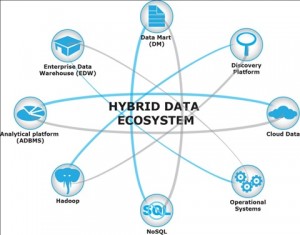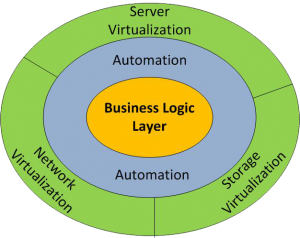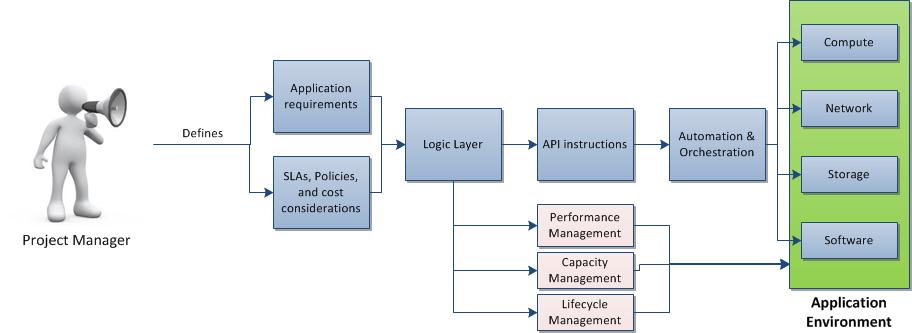When Aesop created the fable about the shepherd boy who cried wolf, the message was clear:
Data Management in 2013: Warning of the Big Data Wolf
By John Myers on Jan 28, 2013 10:43:44 AM
Data Integration in 2013: Give us a platform and we will fill it
By John Myers on Jan 21, 2013 3:27:57 PM
“Back in the day”, Pablo Picaso once said:
100 Lines about 25 Business Intelligence Topics for 2013
By John Myers on Jan 17, 2013 1:11:35 PM
I have always loved the song “88 Lines about 44 Women” by the Nails. And based on some recent success with a blogging topic relating to the songs of the 80s, I thought that I would continue that theme with “100 Lines about 25 Business Intelligence Topics”. Think of this list, or series of lists, as a wide ranging set of predictions, topics for discussion and observations relating to the business intelligence and data warehousing domain for the upcoming year.
IT Point Products DO NOT Support Data Center Infrastructure Management (DCIM), So Stop Calling Them That!
By Steve Brasen on Dec 12, 2012 9:33:49 AM
Nothing drives an IT industry analyst more nuts then when a term is repeatedly misused for marketing purposes. DCIM certainly falls into this category. In the recently release EMA Radar Report on Data Center Infrastructure Management, we looked at hundreds of products claiming to be DCIM solutions, but identified only ten (that’s right … 10!) that could reasonably lay claim to that distinction.
What Big Data Is Not
By John Myers on Dec 7, 2012 1:12:00 PM
Next week, EMA and 9sight will hold a webinar covering our Big Data research findings. Among our insights will be that Big Data has evolved. Moving forward, Big Data isn’t:
The Software-Defined Datacenter: Part 3 of 4 – Questions and Battlefields
By Torsten Volk on Sep 24, 2012 11:24:05 AM
After talking about the “grand vision” of the Software Defined Datacenter (SDD) in part 1 of this series and discussing the individual components required to build out the SDD in part 2, this third part will be all about the three core challenges and controversies:
The Software-Defined Datacenter: Part 2 of 4 – Core Components
By Torsten Volk on Aug 23, 2012 10:42:54 AM
In part 1 of this series of four posts, we examined the grand vision of the software-defined datacenter (SDD). In this second post of the series, we will take a look at the core components of the SDD (see Figure 1) and provide a brief evaluation of how mature these components currently are.
The Software-Defined Datacenter: Part 1 of 4 – The Basics
By Torsten Volk on Aug 16, 2012 6:00:58 PM
The ultimate goal of the Software-Defined Datacenter (SDD), a term coined only a few months ago by VMware’s Steve Herrod, is to centrally control all aspects of the data center – compute, networking, storage – through hardware-independent management and virtualization software. This software will also provide the advanced features that currently constitute the main differentiators for most hardware vendors. The following quote by Steve Herrord succinctly sums up the bad news that VMware is delivering to many of these vendors: “If you’re a company building very specialized hardware … you’re probably not going to love this message.”
A Collaborative Journey to the Cloud
By Torsten Volk on Aug 1, 2012 9:50:10 AM
When I picked “The Journey to the Cloud” as the working title for one of my fall research projects, I triggered some immediate reactions from colleagues and customers, whose opinions I value. And while I typically do not place too much importance on selecting a working title and also did not intend to just warm up an earlier research piece on that same topic, these reactions prompted me to take a minute to think about how we can best target our research for maximum customer benefit. As EMA is conducting this research for our customers – vendors and end users – why not talk to exactly these people to find out which specific issues they want to learn more about? And so we did…
Physical, Virtual … Cloud – Upcoming EMA Research
By Torsten Volk on Jul 18, 2012 12:17:47 PM
Cloud is still a rapidly evolving discipline, with currently many organizations thinking about how to get started or how to take their limited cloud environment to the next level. These organizations are faced with two general challenges. They have to a) get their own house – data center – in order and b) identify a shortlist of vendors that best fit their individual requirements.





